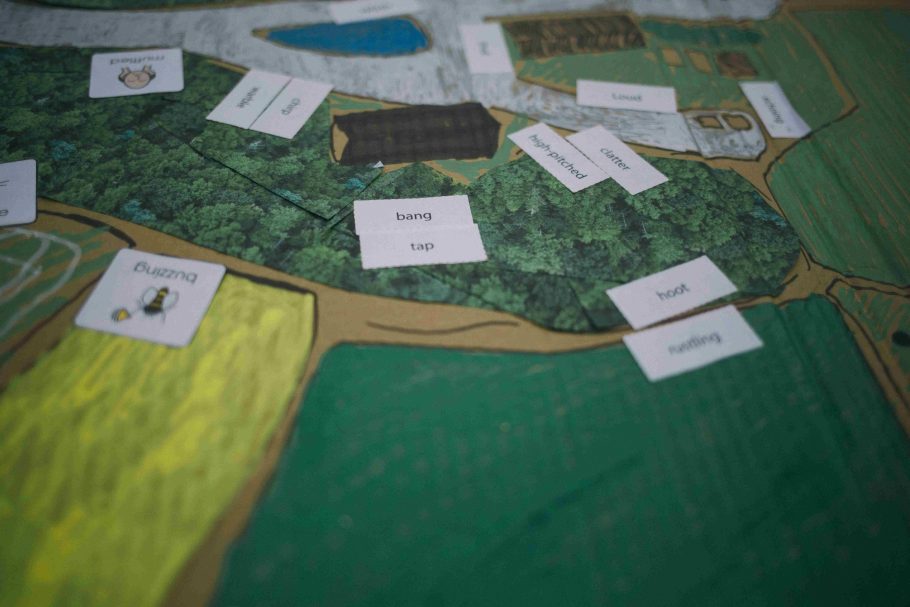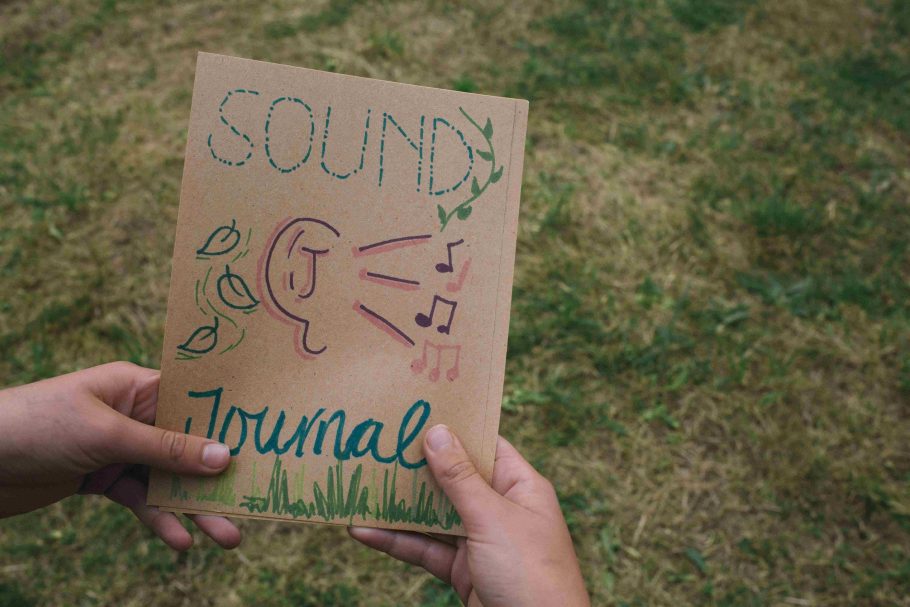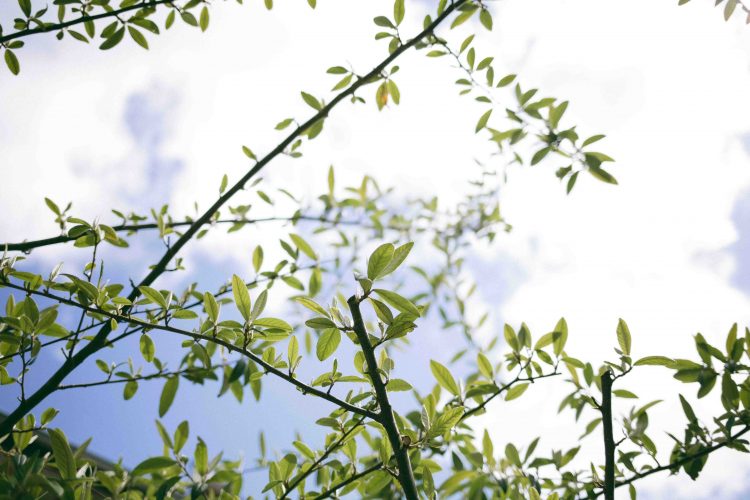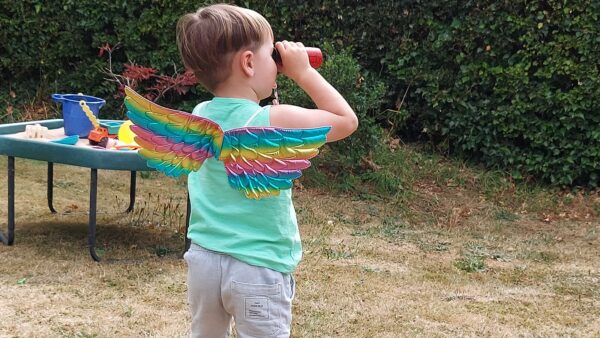We have compiled a collection of activities, games and exercises that are all based around sound.
You will learn how to ‘tune in’ to your natural environment and discover a whole new world of sound. These ideas are suitable for everyone and can be adapted to suit any environment. You can turn a simple walk around your garden into a sound adventure.
Activities include;
- creating a sound hunt
- going on a sound walk
- guidance on how to record and illustrate a soundscape
- keeping a sound journal
There are lots of ways to experience the sounds around us and to make listening fun. Here are a few activities that can be done on their own or combined together. These activities are designed to activate hearing and increase engagement with the environment through attentive listening. These activities can be done individually or as part of a group and range from simple 5 minute exercises to more involved sound ‘projects’.
Start with yourself
This is a fun way of introducing attentive listening and can be done for just a couple of minutes. Be still and quiet and listen out for the sounds your own body is making. What can you hear? Which is the quietest sound of your body? Which is the loudest? How are the sounds different from each other? What is making the sound? Begin to move slowly, how do the sounds change? What can you hear now that you couldn’t before? Listen to the sound of your footsteps changing every time you hit a different surface. As you walk, what sounds are disappearing? Getting louder? Coming towards you? Moving away from you? Can you move without making a sound?
Sound hunt
A collection of sounds are written out on paper (use the list from this document) and put in a bag, everyone chooses one (or several) and then has to listen out for their sound throughout the visit. For example try to find a low-pitched rumble, a high-pitched clang, and a swish. This is one way to begin to collect the sounds and their locations to describe the soundscape of an area.
Go on a Sound walk
This involves walking a route where the main sense being used is sound. There are many ways to do this. The purpose is to enable a person to discover their environment through focussed attention on a specific sense. If it is a group – it could be done as a ‘sound hunt’ (see below) and the whole group could assemble at the end to discuss verbally what they discovered or to ‘illustrate’ the soundscape on a map. It could be done in stages, with the whole group stopping at points along the way. In this case there needs to be a way for the group to know when to stop. Individuals could take turn to signal to the group in turn when they have heard a sound they want to bring everyone’s attention to.
Record and illustrate a soundscape
Make a map of the area you are visiting (draw one or use a real map or print one off from google). If you are doing this as a group exercise then make it as big as you can. Use this map to record the sounds that were heard throughout the visit. What kinds of rhythms does the sound contain, what kinds of pitches, how many continuous sounds, how many and what kinds of discrete sounds? Try to describe the sound instead of (or as well as) thing that made the sound eg. ‘grunt’ rather than ‘pig’. Try mapping the soundscape at different times – eg different times of the day, or at night, in different seasons, or in different weather. This can lead to rich discussions on how and why the soundscape changes. What kind of atmosphere do the sounds create? Do you hear any sounds which do not seem to belong here?

Design your ideal soundscape
Pick out the sounds you like to hear the most and create the ideal soundscape you’d like to spend time in. How do you feel listening to sounds? Do some sounds make you feel irritated? Calm? Soothed? Excited?
Befriend a ‘soundmaker’ and keep a sound journal
Choose something in nature that you can hear eg. the wind, water, birds. For a whole month keep an ear out for your adopted friend. Listen for how its sound changes. Wonder why. Find new ways to describe what you are hearing. Mark your sounds on a map. Try drawing the shape and movement of the sounds. Make audio recordings. How can you capture your ‘soundmaker’ in a photo or on film?
For example befriend the rain – Go out and listen to as many sounds created by rain as possible. Listen for low-pitched and high-pitched ones, for those which continually change their pitch and also their loudness. Rain falling on the dry ground, rain falling on glass, on tin, rain running off the roof. What kinds of structures produce what kinds of sounds when touched by rain? What effects do the various kinds of sounds have on you?

Unique sounds
Echoes are bouncing sounds: Find all the echoes in your environment and examine where they bounce off. Which ones are most interesting and why?
Imitate the sounds of nature.
Simply do that – try and mimic the different sounds you can hear. In a group can you make music using these sounds – making beats and rhythms
Download below a comprehensive list of sound words for you to use as inspiration or as part of a sound game.



